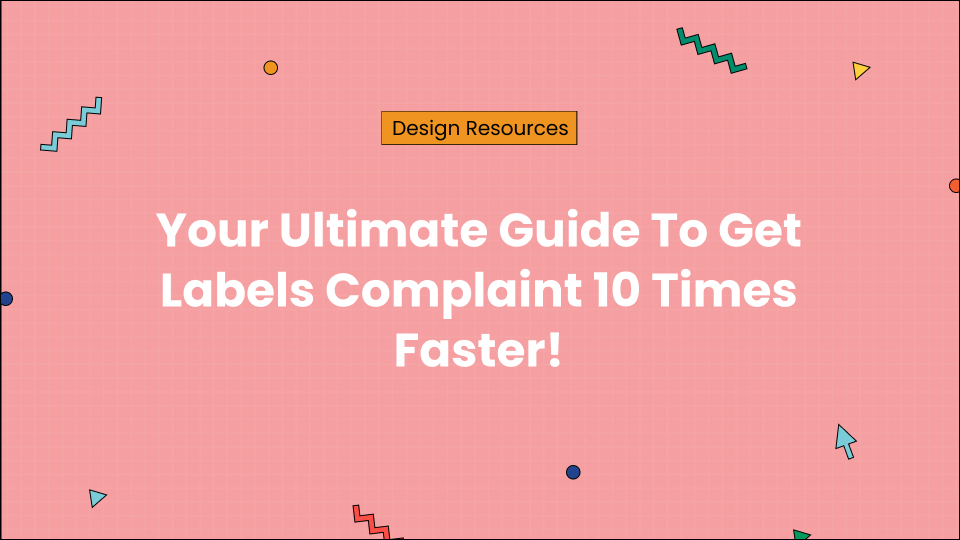Imagine purchasing a cookie that seems harmless, only to discover later that it contained an ingredient that could take a life—like in the tragic case of Orla Baxendale, a 25-year-old dancer who died after unknowingly consuming peanuts.
This heartbreaking story unveils the importance of label compliance. When labels fail to communicate a product’s content clearly, the consequences can be dire, even fatal.
As a business owner or product manager, ensuring your labels meet all regulatory standards isn’t just about avoiding legal repercussions—it’s about protecting your customers and your brand’s integrity.
You don’t want your brand to be penalized for non-compliance, do you?
Then, stay glued until the end to learn about label compliance, its benefits, challenges, and best practices for getting your product labels right.
Let’s get started!
Table of Contents
What is label compliance?
Label compliance is the process of adhering to regulatory requirements and industry standards for product labeling. This ensures that products’ labels contain clear, accurate, and legally mandated information.
Think of label compliance as a traffic signal for your products. Just like red, yellow, and green lights guide drivers and prevent accidents, proper labeling guides consumers, ensuring they make safe choices.
Imagine what would happen if traffic lights were missing or malfunctioning—chaos would ensue, and accidents would be inevitable. The same applies to your product labels; if they’re unclear or non-compliant, customers might end up buying something that could harm them.
It’s essential to understand the regulatory requirements of your industry for your product to meet the required standards.
Who sets the rules & requirements for label compliance?
Regulatory requirements are rules set by government authorities and regulatory bodies that industries must follow before they place compliance labels on their products. However, these requirements depend on multiple factors, such as countries, industries, product type, health claims, and more.
Here are a few popularly known label compliance regulatory bodies you should know:
| Regulatory Body & Jurisdiction Country | Industry Focus | Key Label Requirements |
| The Food and Drug Administration (FDA)– US | Food, drugs, cosmetics, medical devices | Ingredient list, nutritional facts, allergen warnings, drug dosage and side effects |
| United States Department of Agriculture (USDA)– US | Agricultural products | Organic certificate details, proper organic seals, country of origin |
| The European Food Safety Authority (EFSA)– Europe | Food safety | Allergen information, nutritional information, origin labeling, health and nutrition claims |
| Environmental Protection Agency (EPA)– US | Environmental health | Usage instructions for pesticides and chemicals, safety warnings, environmental impact information |
| European Medicines Agency (EMA)– Europe | Medicines | Dosage information, side effect, active ingredients, usage instructions |
| Medicines and Healthcare Products Regulatory Agency (MHRA)– US | Medicines and medical devices | Clear instructions, warnings, ingredient information |
| Food Standards Agency (FSA)– US | Food safety | Allergen warnings, nutritional information, food origins, use-by dates |
Industry-specific standards for product labels

Every industry has standards tailored for its product labeling.
Let’s check some industries’ specific standards:
1. General labeling requirements for the food and beverage industry
Let’s dive into non-negotiable label details for food and beverage industry.
- The common name of the food: This element is your product’s face and should be placed on the Principal Display Panel (PDP). Do not mistake this for the brand name. For example, Special K Red Berries is the common name for the cereal, while Kellogg’s is the brand name.
- Net Quantity: State in both metric and U.S. customary systems
- Nutrition fact label: Include on the information panel, near the ingredient list. Detail nutrients, macronutrients, vitamins, and minerals.
- List of Ingredients: List in descending order by weight. Place it near the nutrition facts label
- Manufacturer, Packer, or Distributor’s name and address: Include name and full address (street, city, state, zip code). Also, You must specify each firm’s relationship with the product, such as “manufactured by,” “packed by,” or “distributed by.”
- Expiry date: Place it prominently, often in a highlighting font. Format as “MM/DD/YYYY” or “MM-DD-YYYY”
- Language and Presentation: Use target market language(s). Ensure text is legible and properly formatted
Note: Expiry date and language should be treated the same way for every industry.
2. General labeling requirements for the pharmaceutical
The requirements for the pharmaceutical and cosmetics industries overlapped. Some cosmetic products can be considered pharmaceuticals because they solve health issues.
Before you pass your product on for use, be sure it meets the following standards.
- Product Name: Include brand and generic names prominently (e.g., “Tylenol (Acetaminophen)”)
- Active Ingredients: List with exact quantities per dosage unit
- Net Quantity: State in both metric and local measurement systems
- Manufacturer Info: Include name, address, and relationship (e.g., “Manufactured by”)
- NDC Number: Display the FDA-assigned National Drug Code
- Lot Number and Expiration: Format as per local regulations. Ensure to place it prominently.
- Storage Instructions: Provide specific conditions (e.g., “Store at 20°C to 25°C (68°F to 77°F)”)
- “Rx Only”: Include prescription drugs
- Directions and Warnings: Provide clear usage instructions and required warnings
- Inactive Ingredients: List all excipients
- Bar Code: Include NDC number in linear format
Note: Ensure compliance with FDA regulations (21 CFR Part 201) and current guidance documents.
3. General labeling requirements for the cosmetic industry
Here are the details you should keep in mind while creating labels for cosmetic industry
- Product Name: Display prominently on the principal display panel
- Net Quantity: State in metric and local measurement systems
- Ingredient List: Use INCI names, list in descending order of predominance
- Manufacturer Info: Include name and address of manufacturer or distributor
- Country of Origin: State where the product was produced, if required
- Batch Code: Display for product traceability
- Expiration Date: Use “Best Before” or PAO (Period After Opening) symbol
- Usage Instructions: Provide clear directions for safe use
- Warnings: Include any required cautions or allergen information
- Function: State the product’s purpose if not obvious from presentation
- Special Precautions: List any required by regulations (e.g., “Avoid contact with eyes”)
- Registration Number: Include if required by local regulations
Note: Ensure compliance with local cosmetic regulations (e.g., EU Cosmetic Regulation, FDA Cosmetic Labeling Guide) and international standards
Importance of staying up-to-date with changing regulations and standards
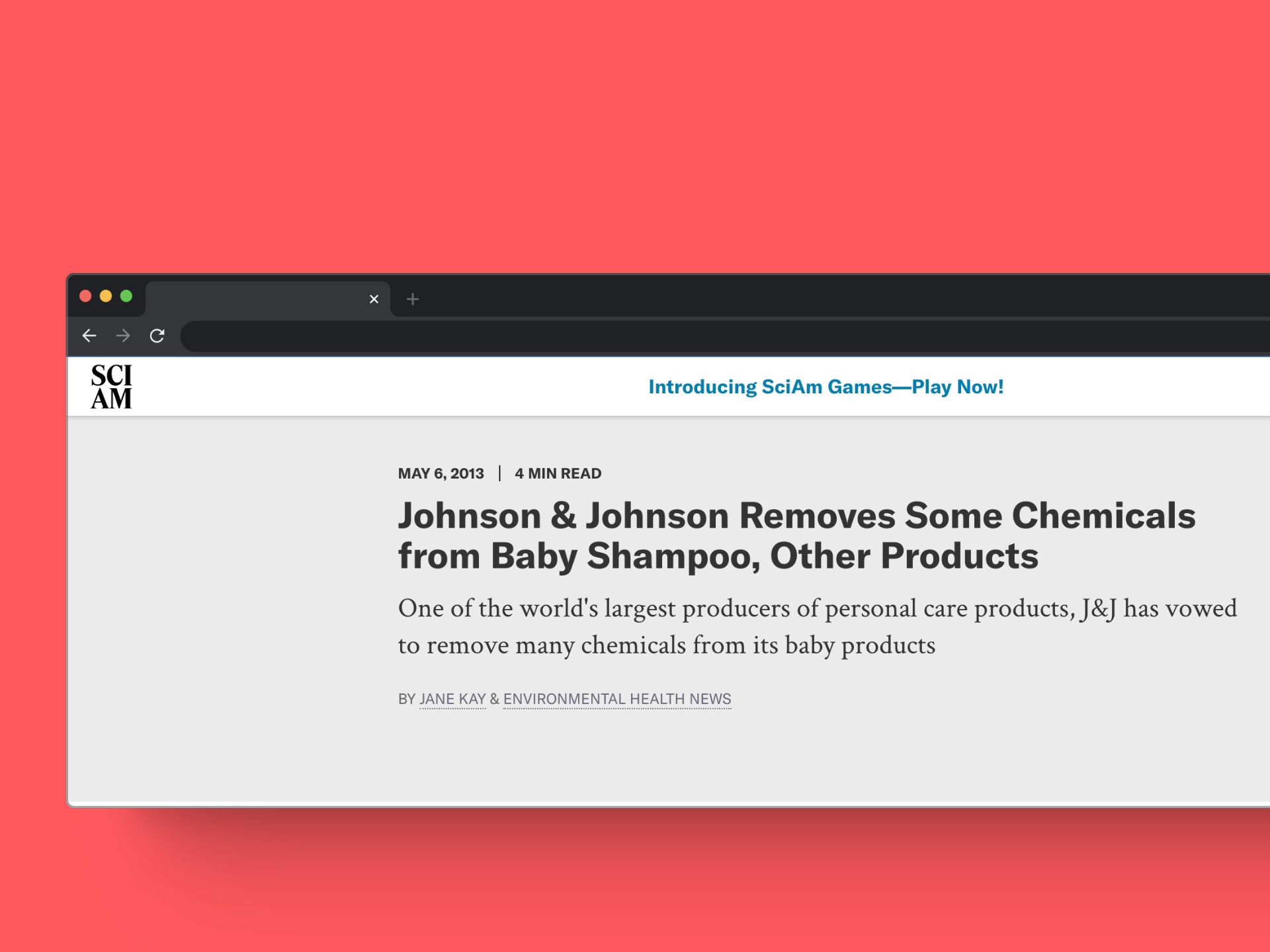
In 2013, Johnson & Johnson recalled thousands of its baby shampoo bottles after regulators found that they contained trace amounts of a chemical banned under new safety standards.
The company’s non-compliance led to not only financial loss but also damaged trust with customers—a reminder that even industry giants can falter when they don’t keep pace with evolving rules.
Considering the case of this well-known cosmetics brand, staying up-to-date with regulation standards:
1. Ensures Legal Compliance
Legal battles over non-compliance can be long and expensive. For instance, Chipotle faced lawsuits for misleading Ads of wrongly labeled food, costing them millions in settlements. By staying informed, you reduce the risk of legal challenges and protect your business from costly litigation.
2. Maintains Consumer Trust
An average consumer will read product labels before use. More so, thanks to social media and educational campaigns of product labels, consumers today are well-informed about the impact of label compliance.
A survey found that 94% of consumers are more likely to be loyal to a brand that offers complete transparency. Keeping up with regulations shows customers that you value their safety and trust.
3. Increases Market Reach
Every country has its label compliance standards. For instance, the European Union has stringent labeling laws, and failure to comply can block your entry into the lucrative EU market.
Not complying with regulations can result in your products being banned from key markets.
4. Gains a Competitive Edge
Apart from your market reach, being proactive with compliance can set you apart from competitors.
According to Deloitte, 63% of consumers are willing to pay more for products from companies that adhere to regulations and promote transparency.
When you’re ahead of the curve, you can market your products as safer and more reliable.
Common label compliance challenges
Let’s break down some of the most common hurdles you might encounter in label compliance.
1. Keeping Up with Changing Regulations
Regulations constantly evolve; staying updated can feel like chasing a moving target. According to a survey, 64% of food manufacturers said regulatory changes are their top compliance challenge. Falling behind could lead to costly non-compliance issues.
2. Ensuring Accurate and Truthful Information
In 2020, Whole Foods recalled thirty food products due to incorrect label allergen information. A small mistake on a label can lead to big problems.
Labels must be accurate and truthful. Misleading or exaggerated claims can damage your brand reputation and attract legal penalties.
3. Managing Supply Chain Coordination
Label compliance isn’t just the responsibility of one department—it involves coordination from the designers to printers. Miscommunication or errors at any stage can result in non-compliance.
A study revealed that 30% of supply chain professionals reported challenges in coordinating compliance efforts across the supply chain. Ensuring everyone is on the same page is vital to avoid costly mistakes.
4. Managing Label Content Across Markets
For international products, you’ve got to navigate different labeling regulations of different countries.
For instance, what’s compliant in the U.S. might not fly in the EU or Canada.
Managing these differences requires a keen eye for detail and often a dedicated team to ensure every label meets the specific regulations of each market.
5. Technology and System Limitations
Outdated systems can lead to errors, delays, and, ultimately, non-compliance. Investing in the right technology, like AI compliance, can help automate parts of the compliance process, reducing the risk of human error. If you deploy advanced complince AI like GoVisually’s, you can also reduce the review cycle by 75% and speed up the time to market by 50%.
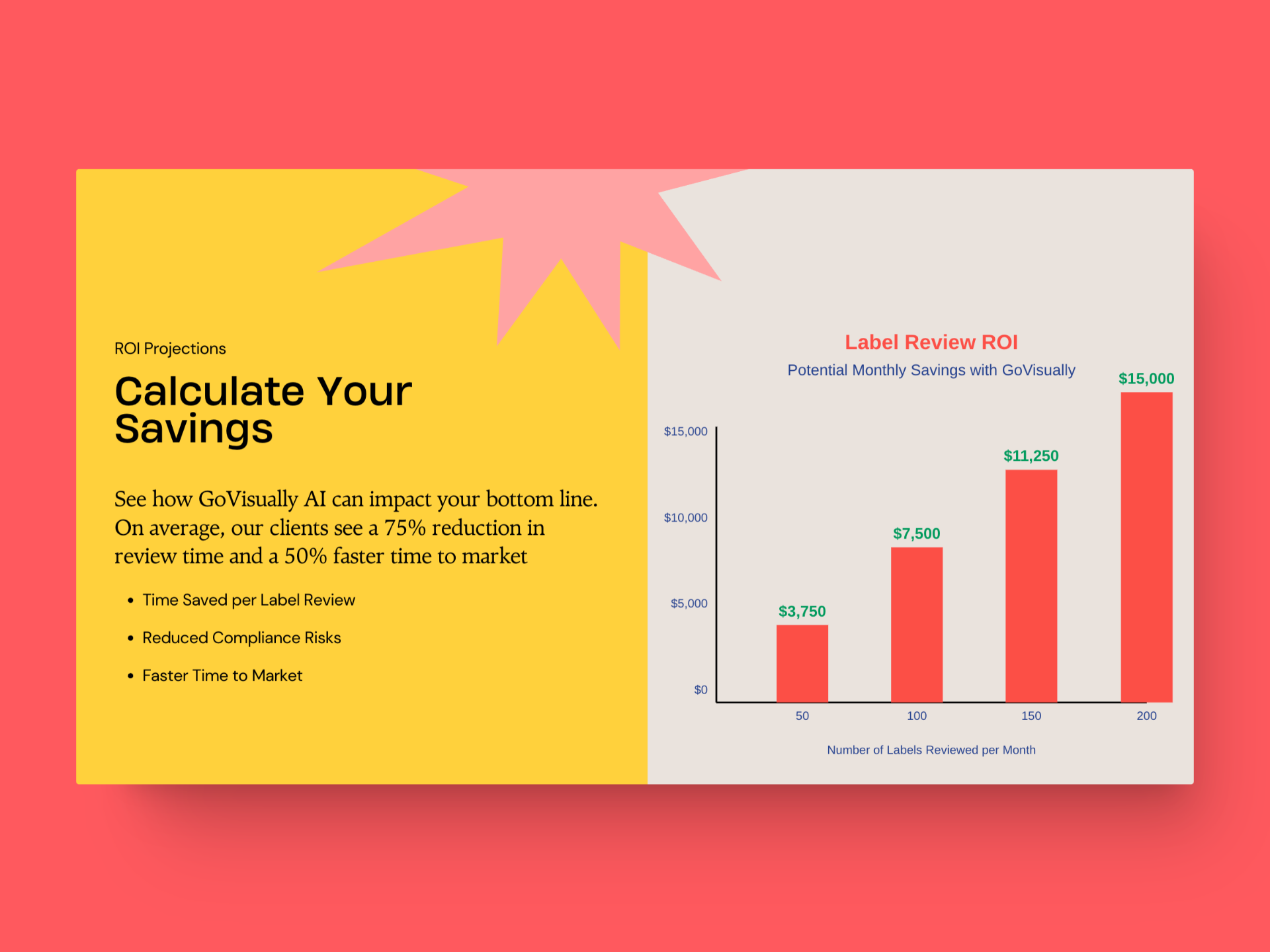
How GoVisually supports label compliance?
Label compliance can be a daunting process but GoVisually can help to grease the wheel and boost your process and effectiveness by 90%.
How?
1. Automated Workflow and Approval Process
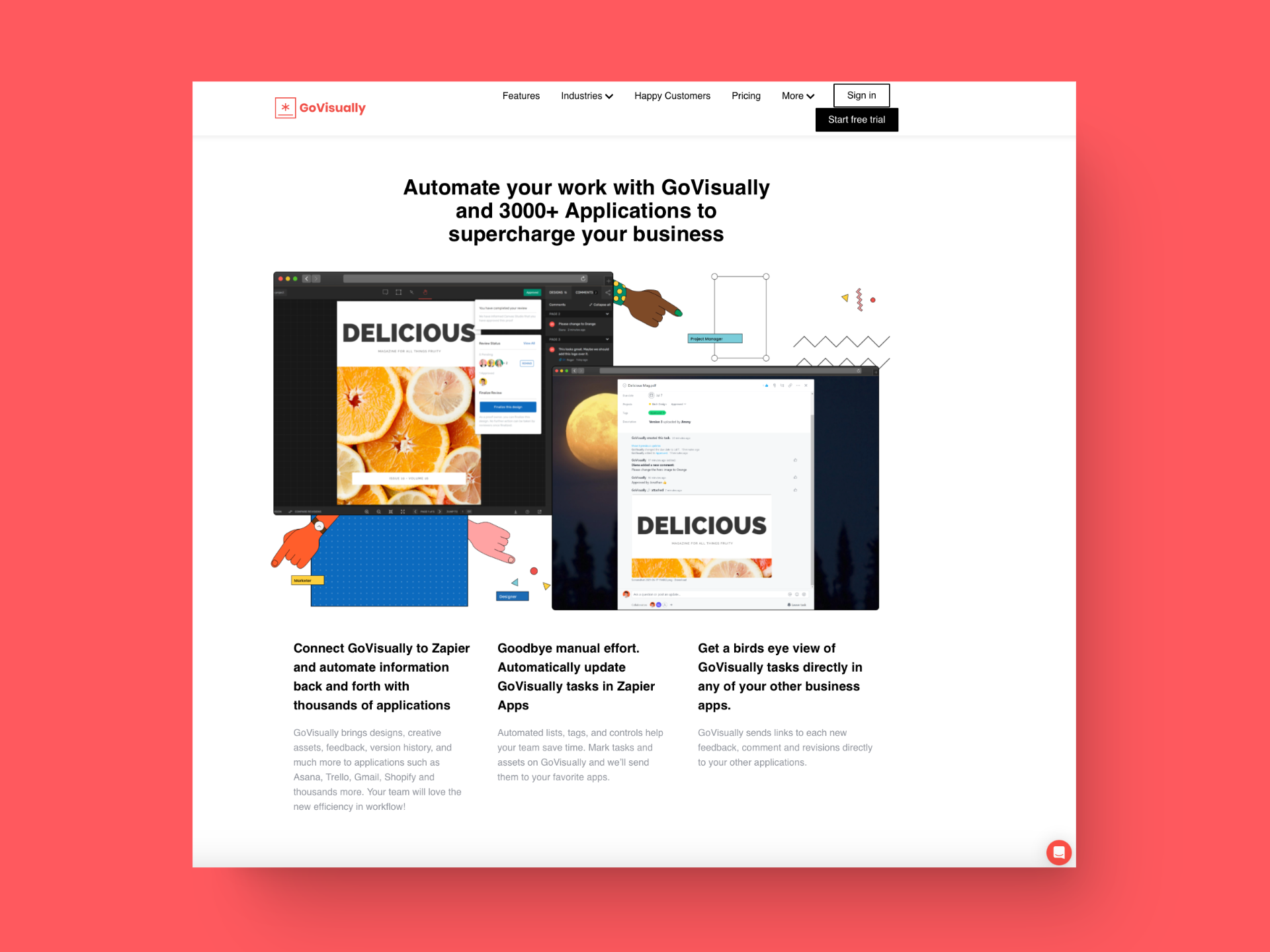
Advanced compliance software should seamlessly integrate with existing design and review processes, enhancing efficiency without disrupting established workflows. Look for solutions offering extensive integration capabilities, like GoVisually— it can connect with 3000+ apps (via Zapier) in just a single click. This allows for automated data transfer, real-time updates, and streamlined collaboration across teams.
2. Compliance Accuracy and Verification
Deloitte’s estimation says that “product recalls cost companies an average of 10 million dollars per incident and approximately 80% of small to mid-size businesses fall within three years of a product recall.
That’s why conducting compliance accuracy and verification is extremely important for brands. So all you need for that is GoVisually’s Free scoreboard. This powerful tool runs your labels through multiple essential compliance checks, providing you with a detailed scorecard that highlights areas of compliance and potential issues. Here’s what our label verification system covers:
- Regulatory Checks – Principal Display Panel (PDP): Ensures that your product’s main display panel meets all regulatory requirements, including proper product naming, net quantity declarations, and mandatory information placement.
- Allergen Declaration – Contains Statement: Verifies that all potential allergens are correctly identified and declared, helping you avoid one of the most common causes of product recalls.
- Information Panel – Ingredient List and Nutritional Facts Panel: Checks the accuracy and format of your ingredient list and nutritional information, ensuring they meet the latest guidelines and regulations.
- Keyword Compliance Checks:
- Sentence Scan: Analyzes the language used on your label for clarity and compliance.
- Required Keywords: Ensures all mandatory terms and phrases are present.
- Restricted Keywords: Flags any terms that may be problematic or restricted in your product category.
By utilizing our Free Label Scorecard and Compliance AI, you’re taking a proactive step in risk management. This tool not only helps you avoid potential regulatory issues but also streamlines your label creation process, saving time and resources.

3. Compliance Checklist
Picture this: You’re at the supermarket, picking up your favorite snack. You flip the package over, scanning the label for that one ingredient you’re avoiding. But wait—it’s not listed where it should be. Frustrating, right? Now imagine being the company behind that product, facing a potential recall, angry customers, and maybe even legal trouble. Yikes!
That’s why you need compliance checklist!!
Key Compliance Areas Covered:
- Allergen information
- Font size requirements
- Language specifications
- Mandatory symbols and icons
Checklist Feature Benefits:
- Ensure Legal Compliance: Systematically verify that all regulatory requirements are met, minimizing the risk of costly recalls or legal issues.
- Prioritize Critical Tasks: Quickly identify and focus on elements that require immediate attention, streamlining your compliance process.
- Efficient Workflow Management: Assign specific responsibilities to team members, ensuring a clear division of tasks and accountability.
- Design Accuracy Verification: Maintain consistency in your product presentation by confirming all design elements are correctly implemented.
- Content Review and Proofreading: Thoroughly check that all text, logos, colors, and fonts align with your established brand guidelines.
- Approval Documentation: Keep detailed records of all approvals, creating a valuable audit trail for future reference and regulatory inspections.
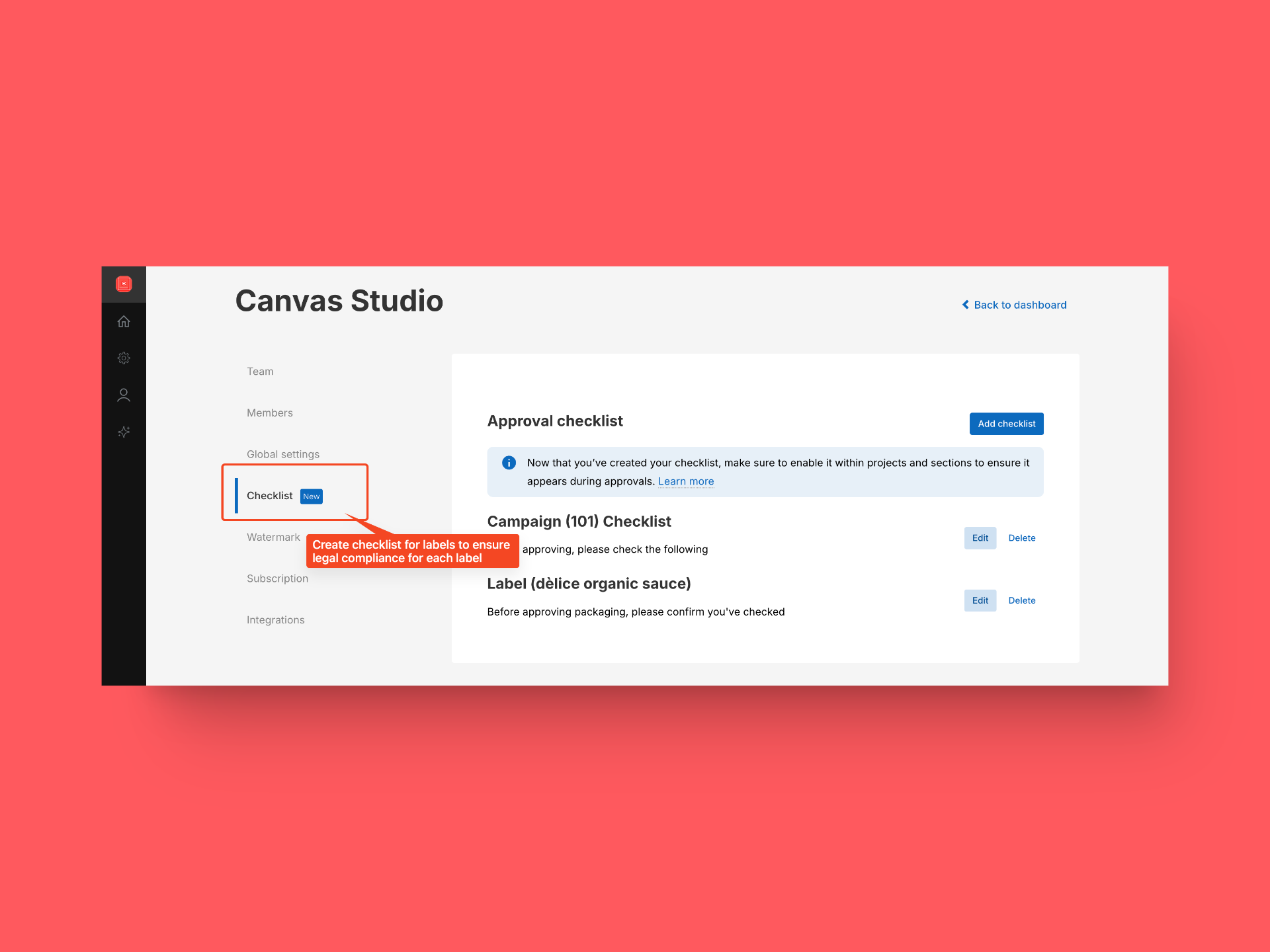
4. Feedback consolidation:
GoVisually consolidates an audit trail of your feedback, changes, and approval to ensure transparency so that everyone works with the most up-to-date information and that any modifications are properly documented. You can also protect sensitive information throughout the review process using private commenting for team members only.
Using GoVisually, you can
- Set clear communication among teams by using its annotation tool to provide direct feedback on the label. You can also mention specific team member for the feedback and send instant alerts
- Establish multistage workflow for communicating work progress clearly. It includes—All Proofs, Needs Review, Needs Change, Approved, and Finalised
And that’s how you can consolidate feedbacks for all labels in one place. Find out more about GoVisually’s feedback here
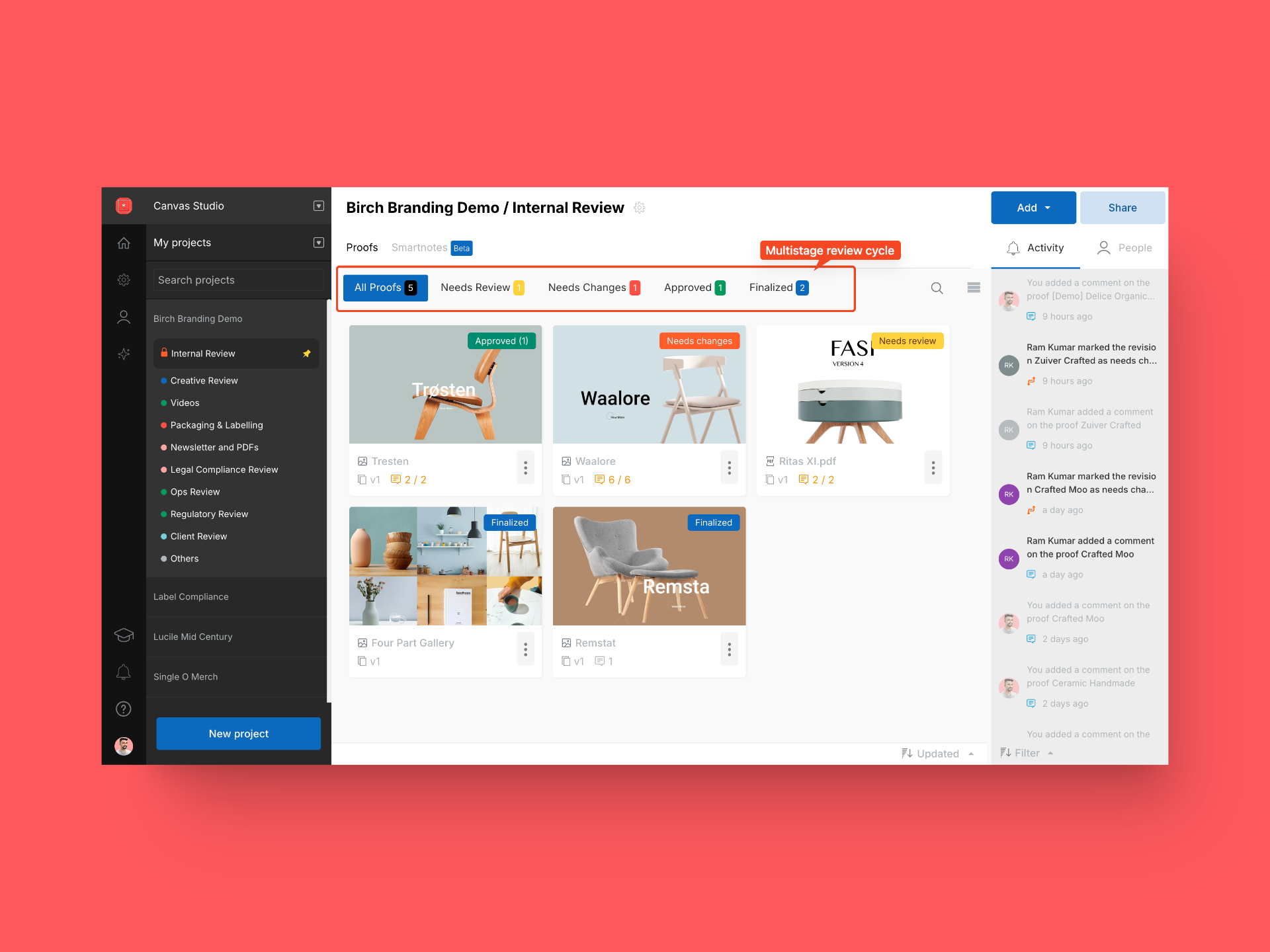
Conclusion
Label compliance is more than just a regulatory requirement; it’s a crucial aspect of building trust with consumers and protecting your business from costly mistakes.
Many businesses war with this process.
However, adopting the right technology solutions can make a world of difference.
Tools like GoVisually provide the structure and support needed to manage the complexities of label compliance efficiently.
GoVisually’s Compliance AI helps you streamline the entire process—from design to approval with an added layer of assurance that your labels are not only compliant but also accurate and effective.
Why not see the benefits for yourself?
Sign up for a free trial to enjoy Compliance AI features for yourself!
